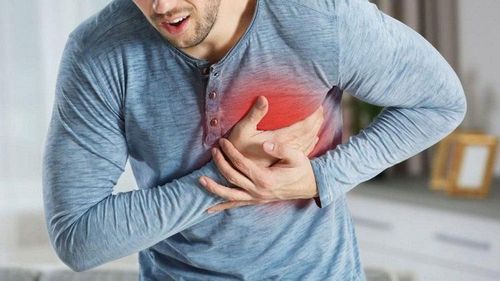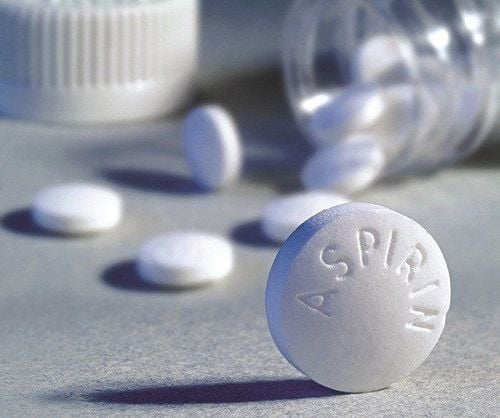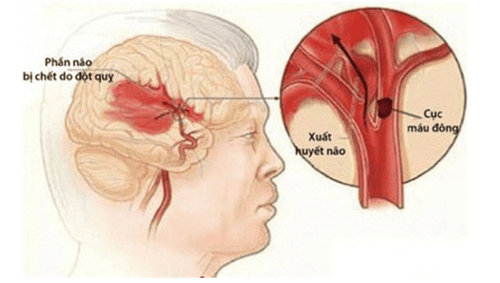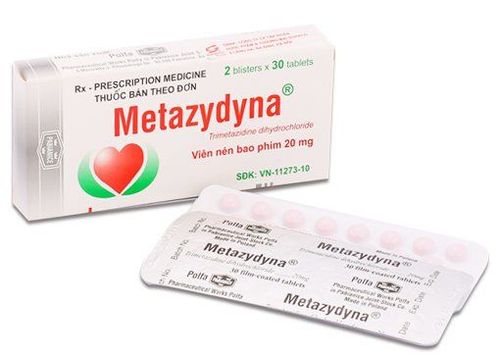This is an automatically translated article.
The truth is that every 45 seconds someone has a stroke and about a quarter of stroke patients will die and about 30% of stroke survivors suffer severe sequelae that leave their body severely disabled. . This stroke affects mainly the brain, causing serious complications and sequelae to the body. So have you ever wondered, how and how does a stroke attack the human brain?Video content is professionally consulted by Master, Doctor Nguyen Thi Minh Phuong, Head of Neurological Stroke Unit, Vinmec International General Hospital
The truth is that every 45 seconds someone has a stroke and about a quarter of stroke patients will die and about 30% of stroke survivors suffer severe sequelae that leave their body severely disabled. . This stroke affects mainly the brain, causing serious complications and sequelae to the body. So have you ever wondered, how and how does a stroke attack the human brain?
1. Brain stroke and what you need to know
Stroke is also known as cerebrovascular accident with 3 main types, each type of stroke has different characteristics and dangerous health fluctuations:First is the type of stroke caused by ischemic stroke. ischemic stroke - this is a condition in which the arteries supplying blood to the brain are narrowed or blocked. These blockages are caused by an active blood clot or severely reduced blood flow, which is caused by the fragmentation of atherosclerotic plaques that block the blood vessels.
There are 2 main mechanisms causing ischemic stroke. The mechanism of embolism occurs when a blood clot forms in one of the large arteries that supply blood to the brain such as the common carotid artery, the internal carotid artery, or forms from the heart along the upward flow of blood and causes an obstruction. circuits in smaller circuits. The mechanism of thromboembolism can occur at the site of atherosclerosis in a blood vessel in the brain and thrombus formation at that plaque. In the hemodynamic mechanism, the blood vessel itself due to atherosclerosis is significantly narrowed leading to ischemia in the area of the brain controlled by this blood vessel, when the patient's blood pressure drops much, it will cause the ischemic area to die and cause death. stroke. About 85% of strokes are from ischemic strokes.
An ischemic stroke occurs when a blood clot forms in another blood vessel - the arteries in the neck - and travels with the blood stream to the brain. A blood clot gets stuck in the arteries of the brain, where it blocks the flow of blood and causes a stroke.
Blood clots can form in the heart: when the person has atrial fibrillation - irregular heartbeat, or heart valve disease (mitral valve). These clots can break off and travel through a blood vessel to the brain.
Finally is a stroke caused by a transient ischemic attack or TIA. A condition that occurs when blood flow to the brain is temporarily blocked. The symptoms are similar to those of a real stroke, however the symptoms are usually temporary and go away after a few minutes or hours.
TIAs are usually caused by a blood clot. It serves as a warning of an actual brain stroke in the future, so don't ignore the TIA. People who undergo a TIA and don't get treatment are likely to have a major stroke within a year. Up to 10-15% of people who experience a TIA experience a major stroke within the next three months.

Đột quỵ là căn bệnh nguy hiểm gây nên tỷ lệ tử vong cao
2. How will the human brain be destroyed by a stroke?
At this time, the human brain will suffer especially serious damage due to lack of oxygen, not enough nutrients to nourish cells and lead to cell death. Within minutes without an adequate blood supply, brain cells will begin to die.The longer the time, the more dead brain cells, the greater the impact on human functions such as motor ability, thinking, balance, language, vision ... even Therefore, when detecting signs of stroke, you need to take your loved one to a medical facility as soon as possible. The signs that suggest you may have a stroke that each of us should know is the BEFAST Rule:
Balance: sudden loss of balance Eyes: sudden loss of field of vision or vision in one or both eyes Face - Mirror asymmetrical face, or drooping on one side of the mouth: let the patient sit upright to observe or ask the patient to smile, "blow fire", show teeth; Arm - weakness/paralysis or numbness of the legs and arms by asking the patient to raise both arms and legs evenly, whichever is weaker, or fall first indicates paralysis. Speech - Abnormal language: ask the patient to speak, repeat a simple phrase. If you don't speak fluently, your voice "distorts" or you can't speak or talk wrong, it's an abnormal sign. Time - If these 3 signs at the same time show that the patient is at very high risk of stroke, please urgently and quickly bring the patient to a medical facility capable of treating stroke. Currently, Magnetic Resonance Imaging - MRI/MRA is considered a "golden" tool to screen for brain stroke. MRI is used to check the condition of most organs in the body, especially valuable in detailed imaging of the brain or spinal nerves. Due to the good contrast and resolution, MRI images allow to detect abnormalities hidden behind bone layers that are difficult to recognize with other imaging methods. MRI can give more accurate results than X-ray techniques (except for DSA angiography) in diagnosing brain diseases, cardiovascular diseases, strokes,... Moreover, the process MRI scans do not cause side effects like X-rays or computed tomography (CT) scans.\
Vinmec International General Hospital currently owns a 3.0 Tesla MRI system equipped with state-of-the-art equipment by GE. Healthcare (USA) with high image quality, allows comprehensive assessment, does not miss the injury but reduces the time taken to take pictures. Silent technology helps to reduce noise, create comfort and reduce stress for the client during the shooting process, resulting in better image quality and shorter imaging time. With the state-of-the-art MRI system With the application of modern methods of cerebral vascular intervention, a team of experienced and well-trained neurologists and radiologists, Vinmec is a prestigious address for stroke risk screening and screening. reliable goods.
Please dial HOTLINE for more information or register for an appointment HERE. Download MyVinmec app to make appointments faster and to manage your bookings easily.













